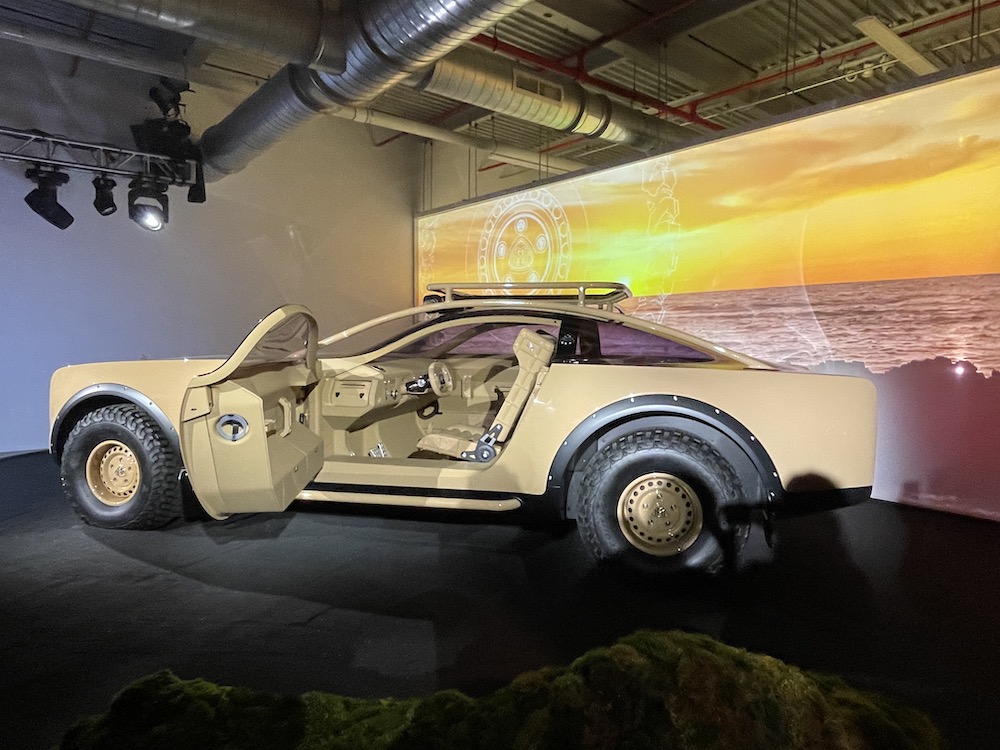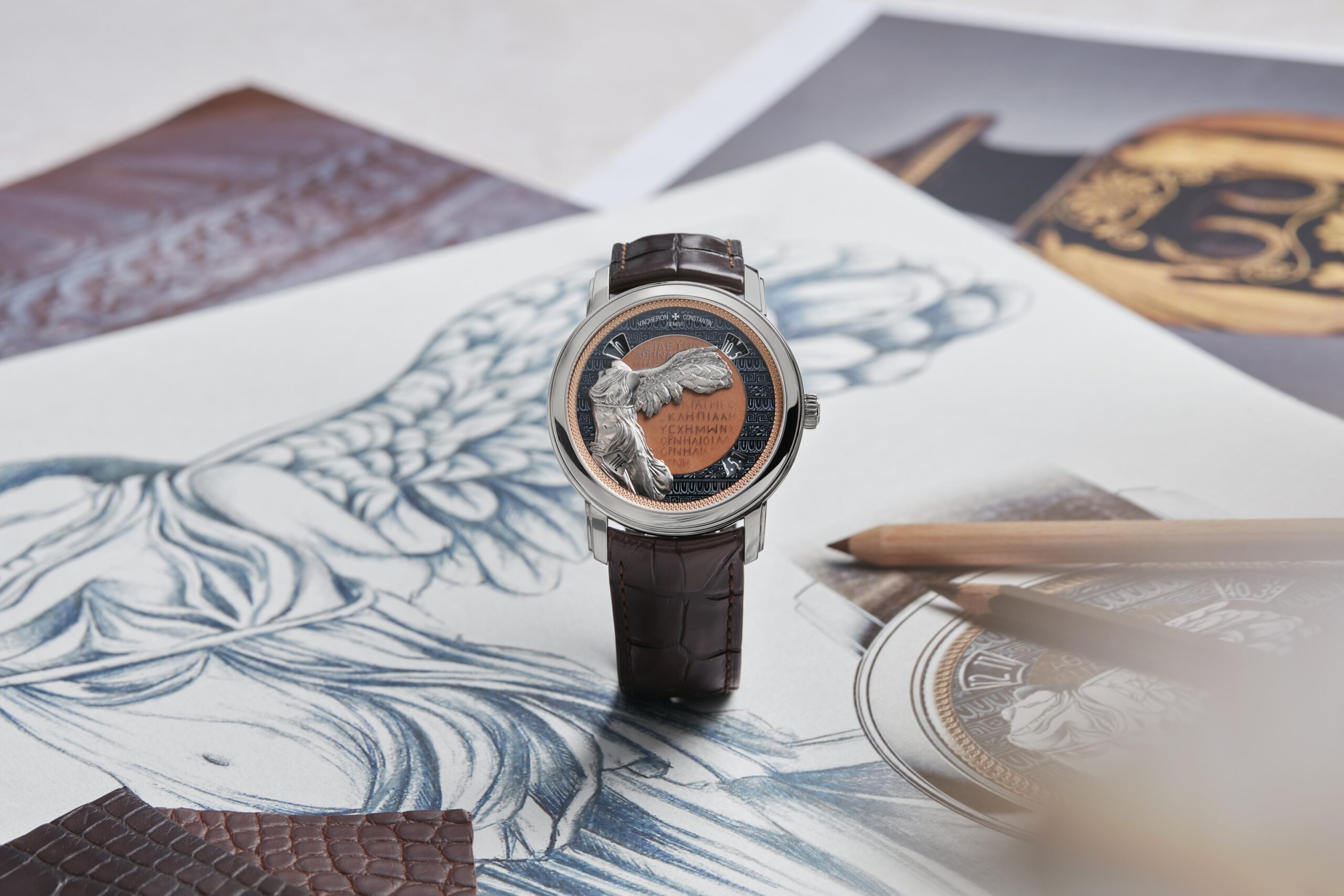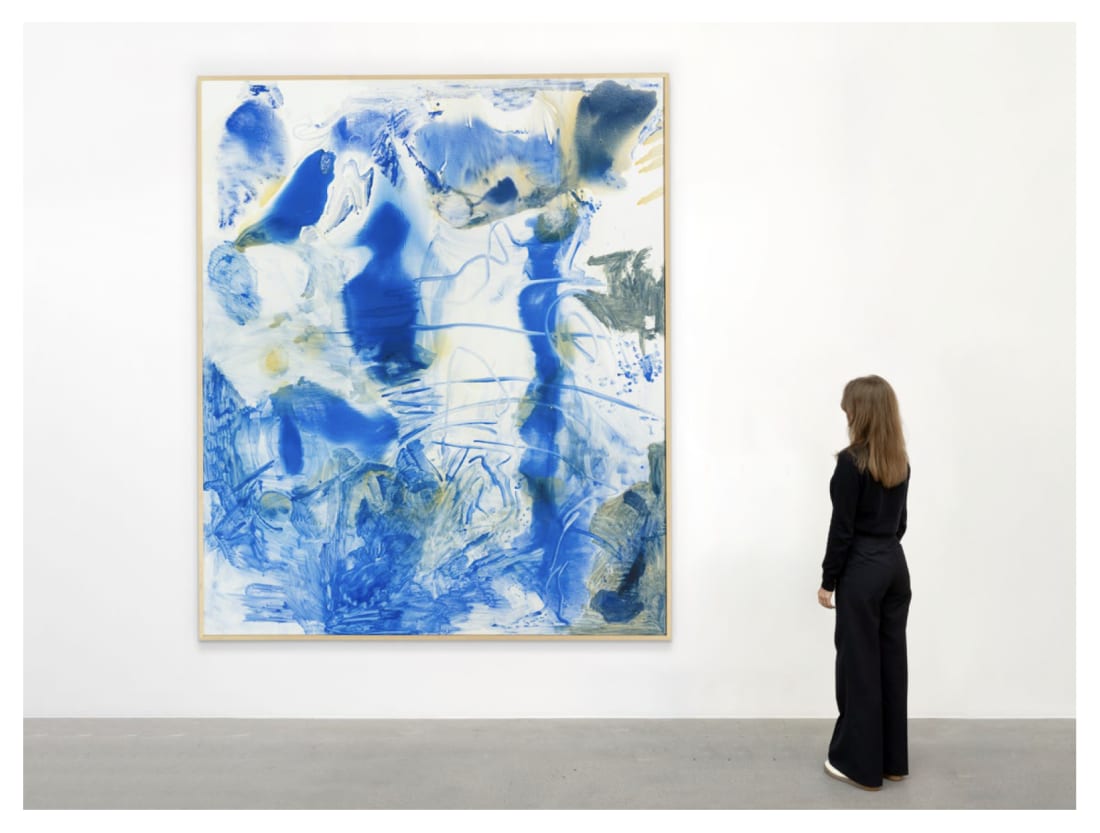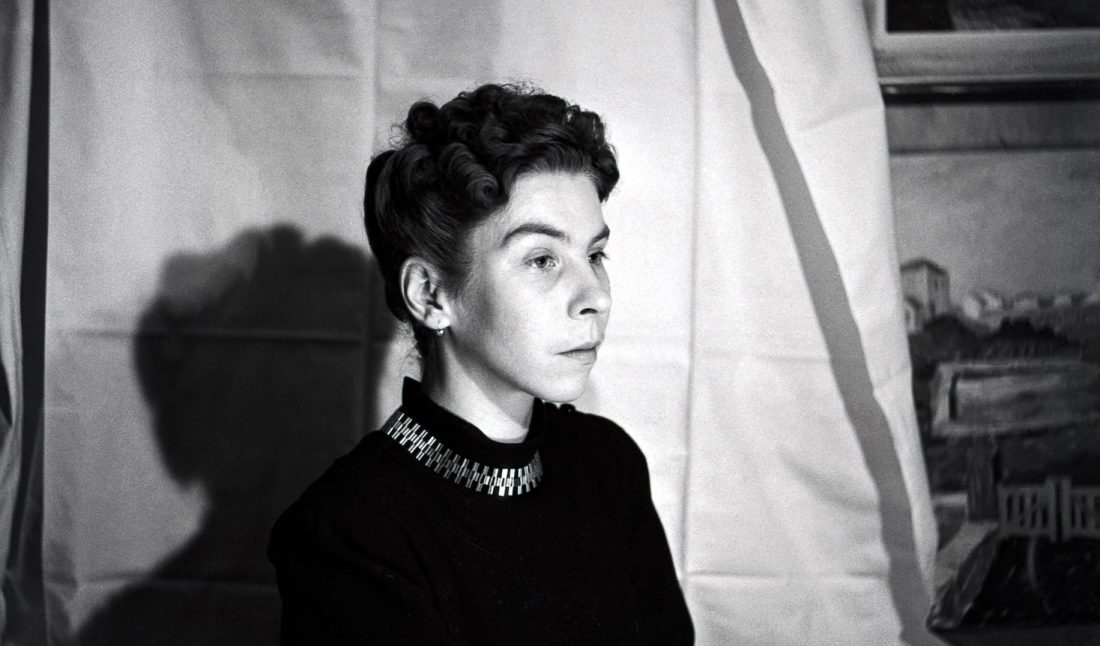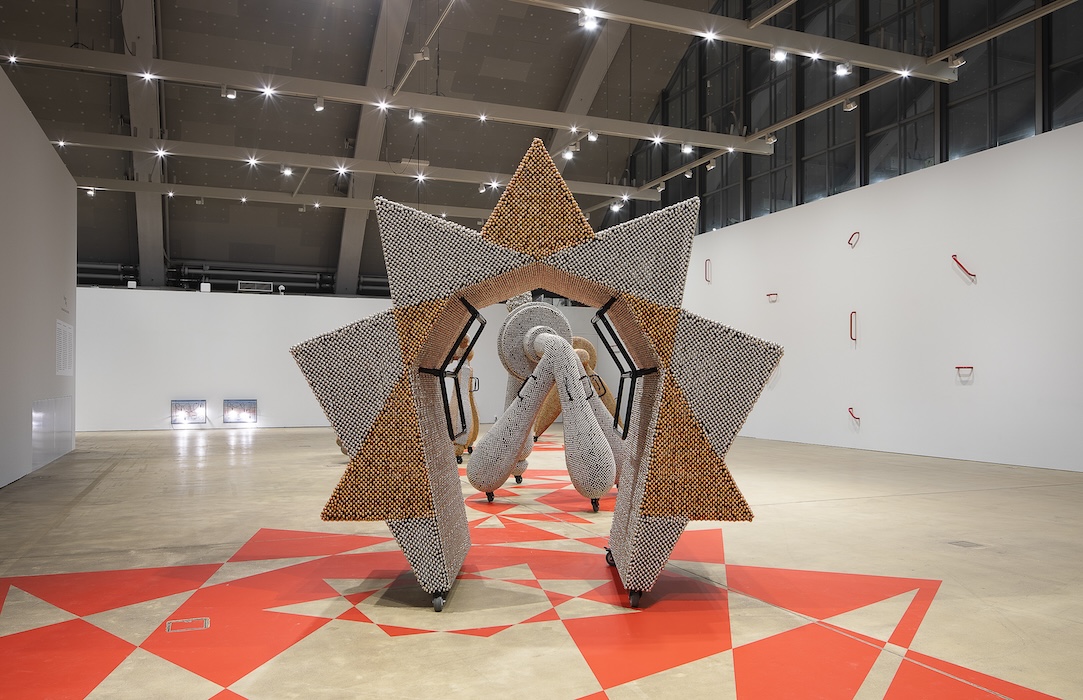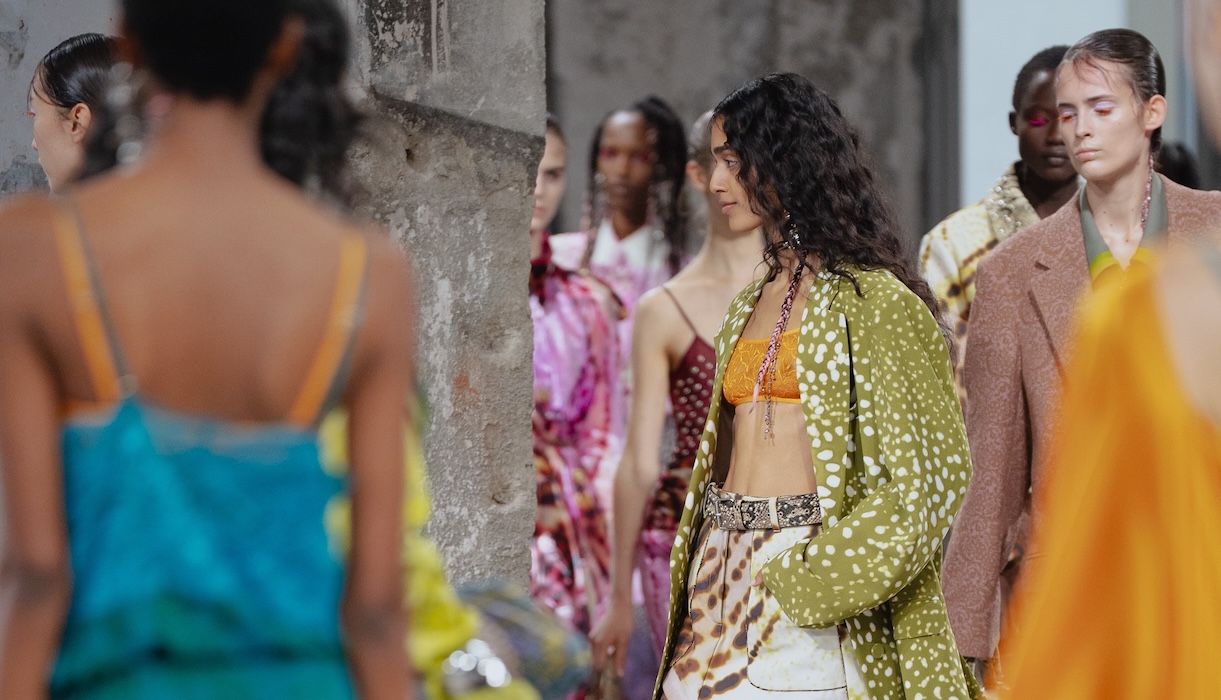Eighty years ago, the entire world celebrated the end of World War II. All around the world, survivors grappled with grief, displacement, and reparations. That year, 1945, was also the year that a prolific Finnish painter and muralist, Tove Jansson, depleted by the trauma of the war, published an illustrated novella called The Moomins and the Great Flood. The story of a family of strange and soft little “moomintrolls” finding each other after a great flood was as much about loss and fear as it was about joy, adventure and tolerance; topics that would become thematic to Jansson’s oeuvre to come. More Moomintroll books and characters followed and their popularity grew.
The rest is history, as they say. When a British newspaper syndicate contacted Jansson to incorporate the inhabitants of Moominvalley into a comic strip, her uniquely appealing illustrations became a global phenomenon. Tove presciently set up a licensing company, Moomin Characters Ltd, when it was clear the demand for her beloved characters was bigger than just the books. Moomintrolls are now ubiquitous all over the world, with Jansson’s iconic line drawings gracing every product imaginable from mugs and furniture to theme parks and a fleet of aircrafts.
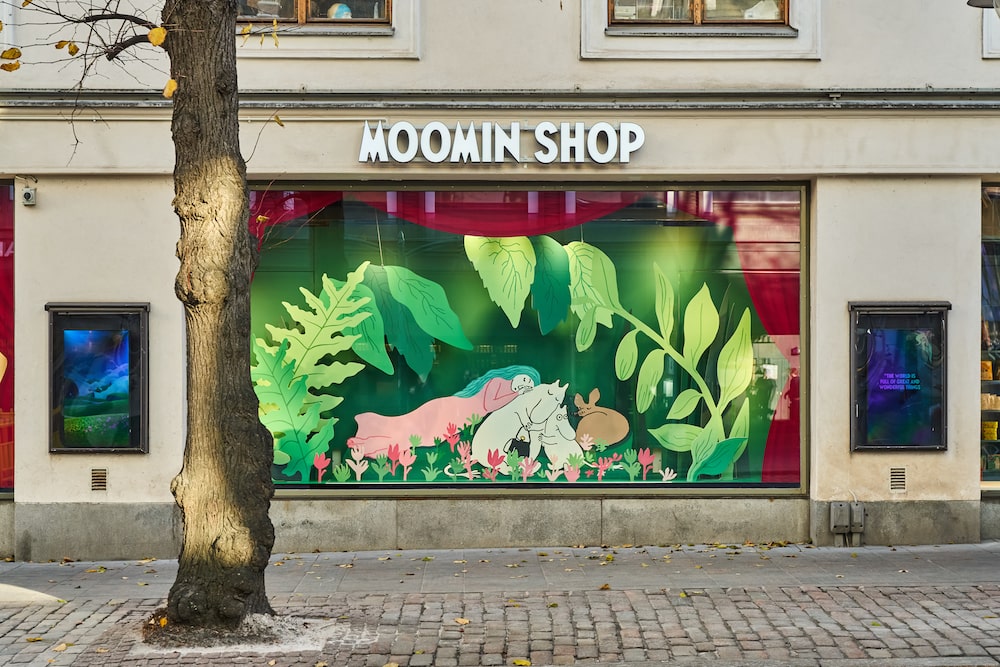 Courtesy of Moomin80.
Courtesy of Moomin80.
In recognition of the 80th anniversary of Jansson’s first book, Moomin Characters Ltd is celebrating with a slate of exciting collaborations. Fans of the franchise can enjoy Moomin fashion by Acne Studios, Comme des Garçons, Rue de Tokyo, and Uniqlo. Artek, the iconic Finnish furniture design house, is making a set of chairs and a table emblazoned with Jansson’s drawings.
In the US where the Moomins are much less well known, we are seeing capsule collections in Barnes & Noble and Urban Outfitters and inklings of more on the horizon. Tove Jansson’s family continues to run Moomin Characters Ltd with conscientious devotion to the spirit of the Moomintrolls. Tove’s niece Sophia Jansson and her great-grandnephew Thomas Zambra (Chairperson and Head of Business Development, respectively) sat down with Whitewall to talk about Moomin80, the legacy of Tove Jansson and the future of the Moomintrolls.
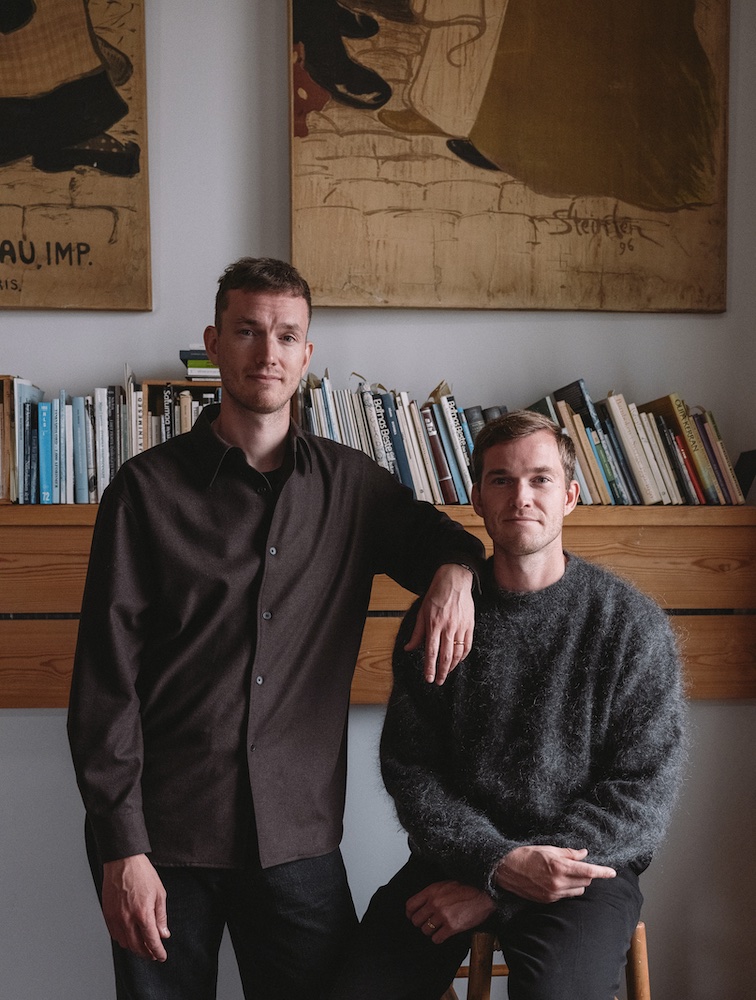 James and Thomas Zambra.
James and Thomas Zambra.
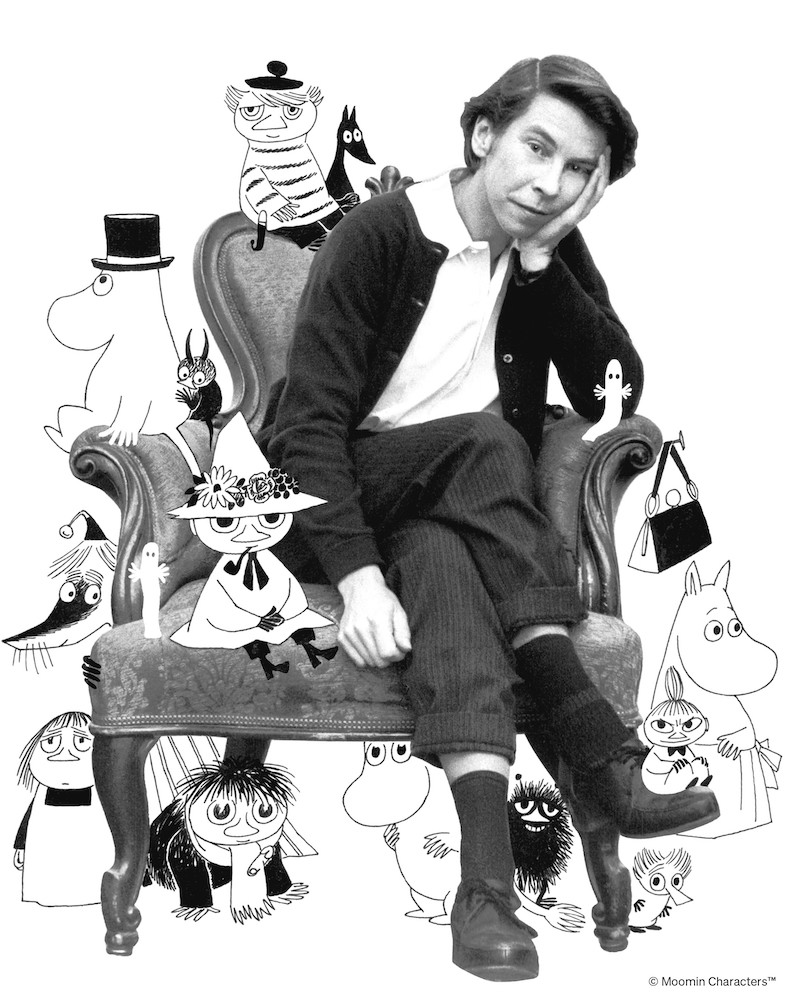 © Moomin Characters™.
© Moomin Characters™.
WHITEWALL: I have been a lifelong fan of all things Moomin; my father read them as a child and I am currently in the process of immersing my own children in Moominland (with easy success). What is incredible about these books is that they have multigenerational appeal, can be read at any age, and they don’t seem dated even a little bit. Can you speak to the phenomenon of the everlasting appeal of Tove’s work?
THOMAS ZAMBRA: Yes, it’s quite amazing. The books do seem just as relevant today as when they were written. I think people of all ages identify themselves in the characters and the stories. From a distance, the stories and characters may seem simple or cute, but there is much more at work. They are the type of stories that people fall more in love with the better they know them.
Within the stories, you can find thoughts on universal questions, questions of identity, of finding one’s place in the world, and of what a happy life consists of. The books can offer clues to those who are open to them. I also believe the unique visual style of Tove Jansson’s illustrations draws people in. The illustrations in the novels are incredibly appealing and have the capacity to create a magical, whimsical world that you desperately want to be a part of.
“You can find thoughts on universal questions, questions of identity, of finding one’s place in the world,” — Thomas Zambra
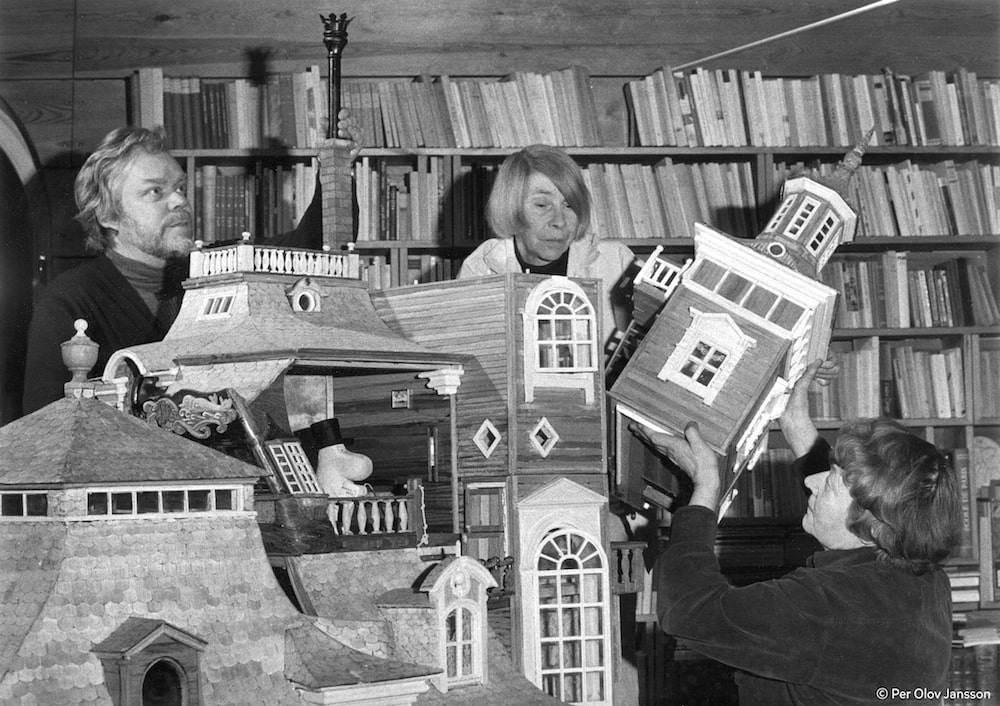 Tove Jansson, portrait © Per Olov Jansson.
Tove Jansson, portrait © Per Olov Jansson.
WW: Can you tell me about your own relationship with Tove as a family member? What was the context of your introduction to the Moomins as children?
TZ: Tove is my great-aunt—I would see her at family gatherings, especially during the summer, during which we would spend time on islands in the Finnish archipelago adjacent to each other. Still, being very young, I unfortunately didn’t have the chance to develop a personal relationship with her. With age, I have come to realize how truly exceptional she was. I remember the Moomins always being around, but not overwhelmingly so. I think this was a deliberate decision by our mother. I was, of course, reading the books as a child, but my clearest memories are of gatherings at the home of one of our mother’s friends in Helsinki during which we and all of our “cousins”, friends we grew up with, would sit glued to the TV watching the 90’s animated series.
Tove Jansson the Painter and Muralist
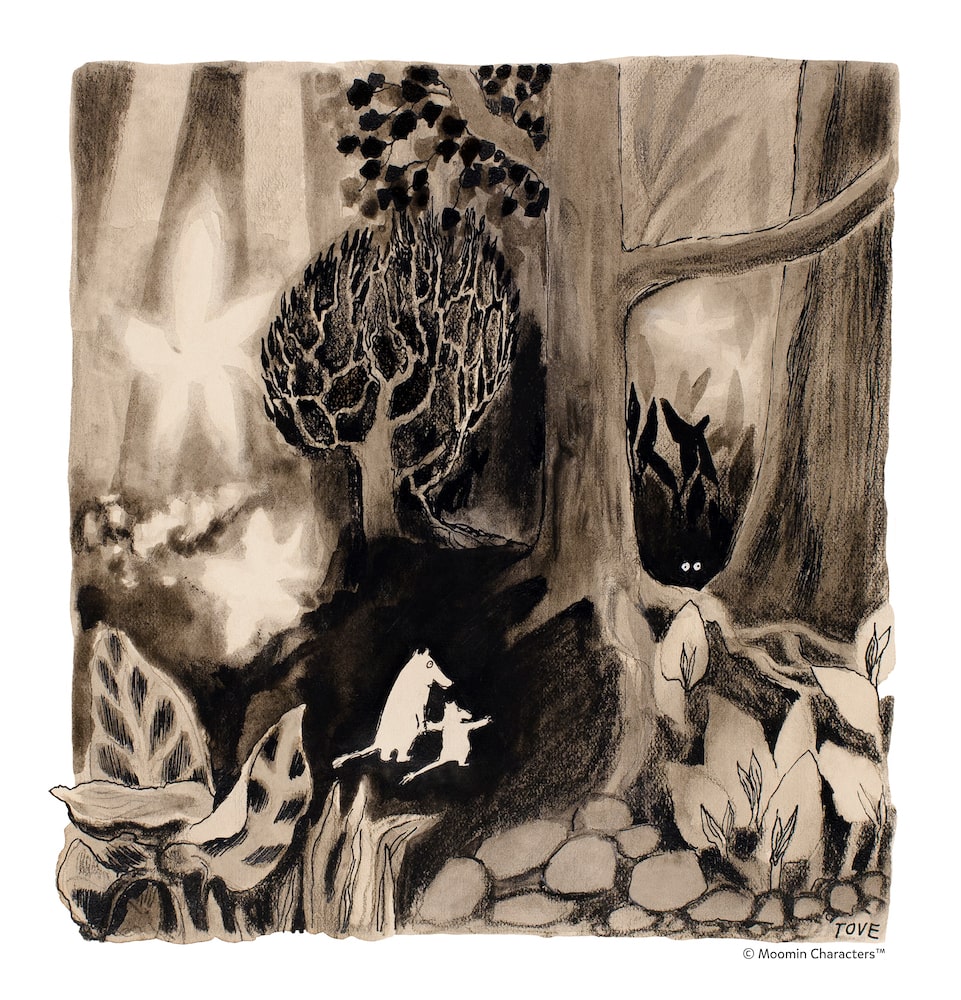 © Moomin Characters™.
© Moomin Characters™.
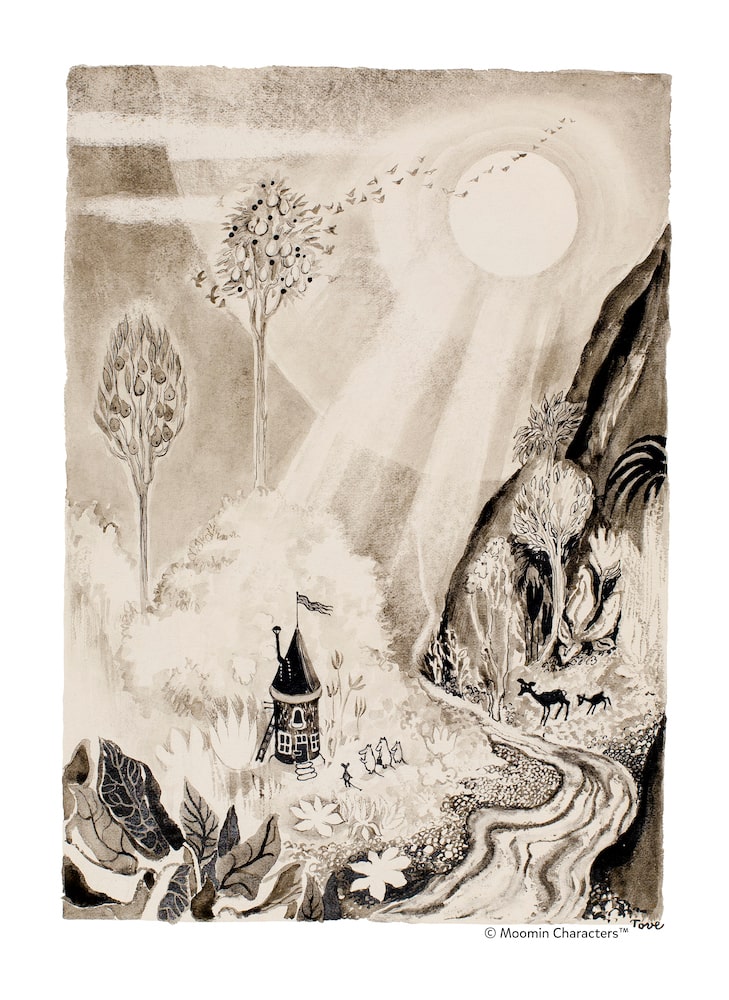 © Moomin Characters™.
© Moomin Characters™.
WW: Tove’s earlier career as a painter, muralist and illustrator are becoming more well known. But even without any context at all about her life or art, Tove Jansson’s Moomintroll stories are so captivating and glorious, they stand alone as an incredibly impressive body of work. How did Tove describe her distinctive artistic style with respect to the Moomins?
SOPHIA JANSSON: Because Tove trained to become a painter, muralist and illustrator she carried her narrative style and skills of composition from her visual art into her writing. She, however, wrote the Moomin books over two decades, so naturally her style developed during the years to, in time, become more exact, more philosophical, and visually set on a look for the Moomin characters that reflects their personalities. Like any self-respecting artist, Tove would not have wanted to lock herself into any particular distinctive style but forever become better at her work.
WW: You can tell immediately that Tove trusts children with their own complicated emotions. Can you tell me about her relationship with the children in her life and how she came to understand them so well?
SJ: Tove was gifted with a special way of encountering anyone she met, be it a child or an adult. She was never bound by convention or preconceived ideas about station. Hence, she would meet anyone, including children, as her equal and never put herself above or below them. Her interest in others was very genuine, and children especially sensed that. She was also very playful and never got jaded about simple things, like the joy of flying kites, or diving off a cliff into the sea.
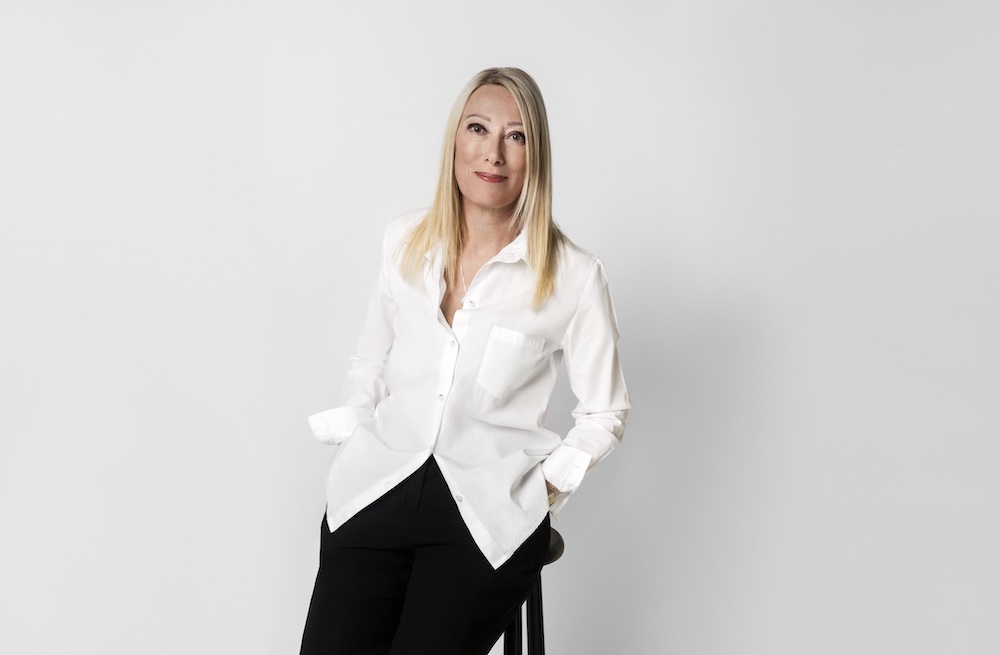 Sophia Jansson, photo ©Marica Rosengard.
Sophia Jansson, photo ©Marica Rosengard.
WW: Tove and her brother Lars worked closely together as her Moomins gained popularity in the 1950s, including him taking the reins of her English comic strip when her contract expired in 1959. Did Lars have any formal training as an artist or did he learn entirely from his sister? What were his feelings about carrying on her legacy as, essentially, an extension of her?
SJ: Growing up in a close-knit artist family, the siblings were used to helping each other out with their respective artistic projects. Lars helped Tove with the manuscripts of the comic strips already prior to her formally handing over the reins to him. Lars did not have any formal training as an illustrator but spent a few months learning to draw the Moomin characters together with Tove.
In the beginning, he was very faithful to Tove’s themes and style of drawing. Only several years later, he developed a more personal style in the strips. He ended up creating the Moomin strip for almost fifteen years.
WW: Tove’s artistic style is so unique and has many of its own innovations, but there seems to be a bit of post-impressionism in her paintings and a bit of Hokusai in her Moominland landscapes, for example. Are there any artists in particular that she gives credit to for Inspiration?
SJ: Tove admired the Japanese woodblock artists and would almost certainly have taken inspiration from them. However, she was also a big fan of Matisse and her use of colour was influenced by the impressionists. She has been described as a colorist.
“She was also a big fan of Matisse and her use of colour was influenced by the impressionists,” — Sophia Jansson
WW: The Moomin Characters business is huge; nearly a billion dollars worth of Moomin products are sold per year worldwide. What do you think Tove would say about how popular her beloved characters have grown globally?
TZ: I believe she would be amazed and possibly a bit surprised by the amount of people around the world who have been touched by her stories. Tove herself participated in the merchandising of the Moomin property in the 1950s and was deliberate about everything she did. She came to realise that there were opportunities for her characters far beyond the original stories and was ready to explore their commercial potential in different endeavours during her lifetime.
A Multi-Media Artist Ahead of Her Time
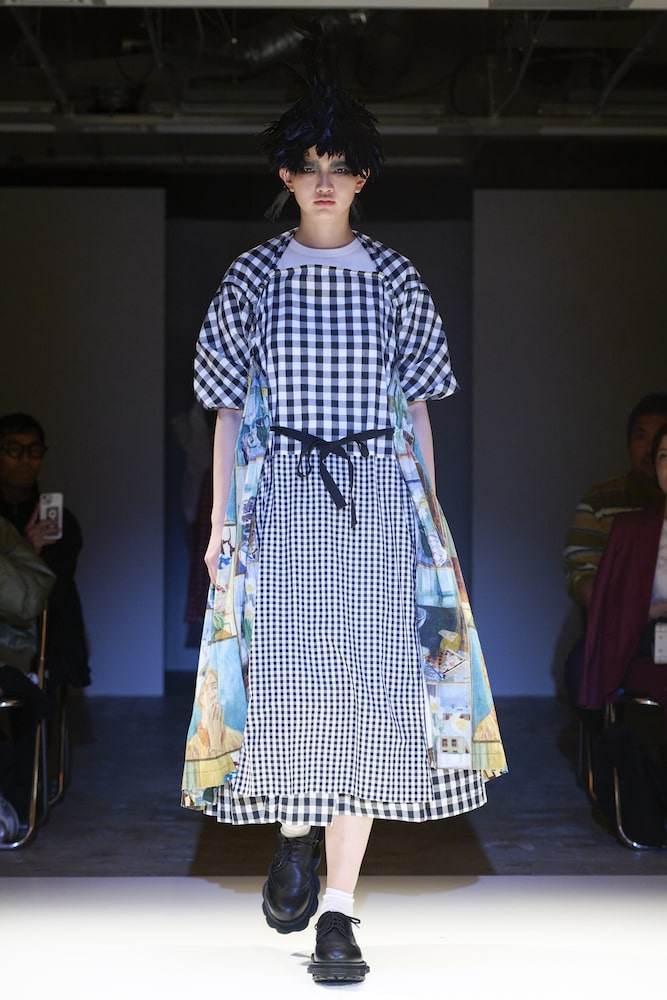 ©︎Comme Des Garcons.
©︎Comme Des Garcons.
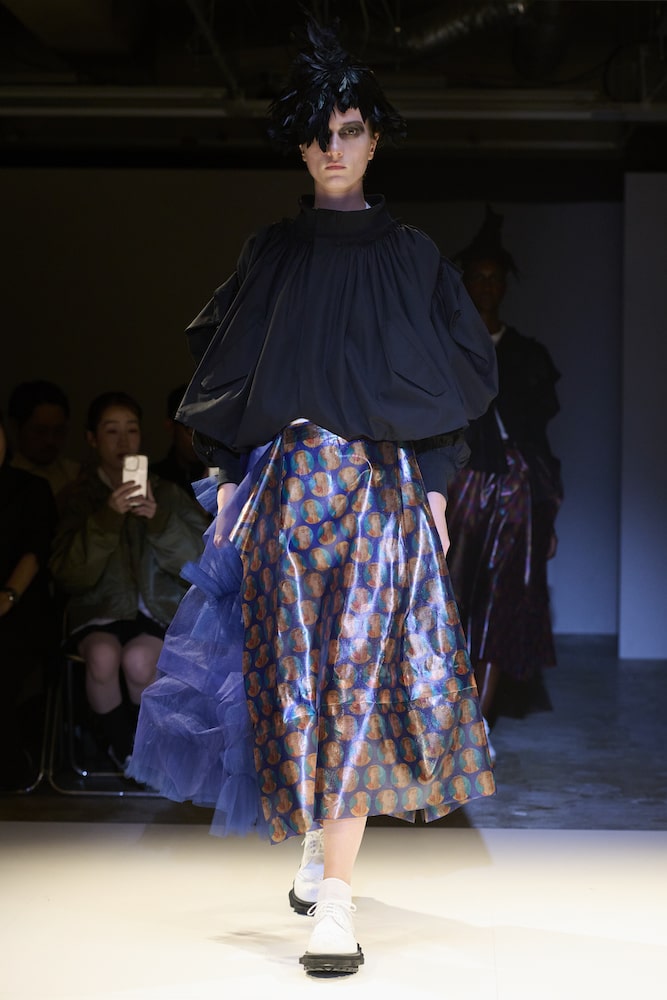 ©︎Comme Des Garcons.
©︎Comme Des Garcons.
WW: Tove was prolific in so many mediums: painting, writing, theater, illustration, comics, product design, etc. But as the Moomins became increasingly popular, did she find it difficult to compartmentalize her talents or did she view her myriad skills as a whole incorporated body of work?
SJ: Tove was a multitalented artist with a strong desire to express herself continuously. Hence, she put herself in everything she did and did not separate painting from writing or any other form of expression. Her life and art are really one and the same thing.
WW: Tove must have had a prescient vision for the appeal of products featuring Moomin characters and created products as early as the 1950’s at the outset of their popularity. Did Tove have any inkling that marketing the Moomintrolls as an objectively charming design motif might help bring in more people to interact with her books?
SJ: The appeal of the Moomin books was a very welcome career development for Tove, but she was taken by surprise by the great desire for Moomin products. However, in the fifties, when the success of the books was still fresh, she agreed to help out with designing products herself. With time, she realised the great demands on her time the popularity of the books meant and gradually stepped back from participating in the merchandise business around the Moomintrolls.
WW: Of all the wisdoms Tove incorporated into her work, what is the best piece of life advice you think she would have wanted to impart upon us?
SJ: “Be nice to one another.”
WW: Was Tove concerned about her legacy? What impact did she hope to continue to have?
SJ: Tove understood that she had created a unique literary body of art, but she did not spend time worrying about what would happen to it after her death.
WW: Tove’s licensing of her artworks precedes artists like Keith Haring, Takashi Murakami or KAWS. How groundbreaking was it for her to be operating in this way at the time she did?
TZ: Tove was unaware of how big the licensing around her characters was to become, and still is today. The fact that people go on wanting to read her books and identify with what she wrote about is because of the universal values she expressed in the stories and her exquisite illustrations. It was groundbreaking to have so many artists in one person.
